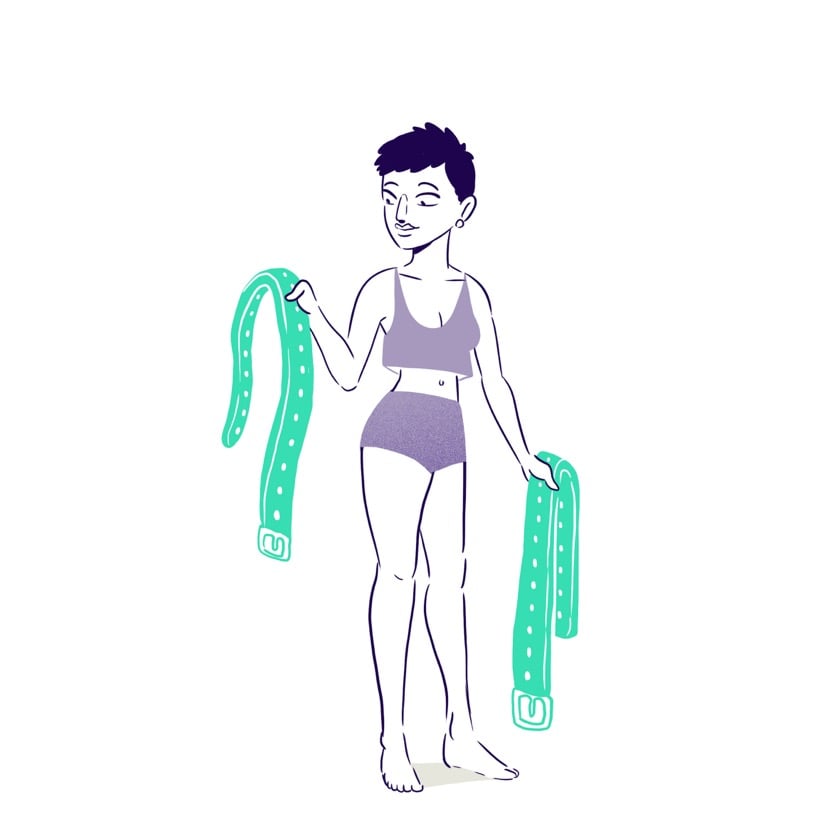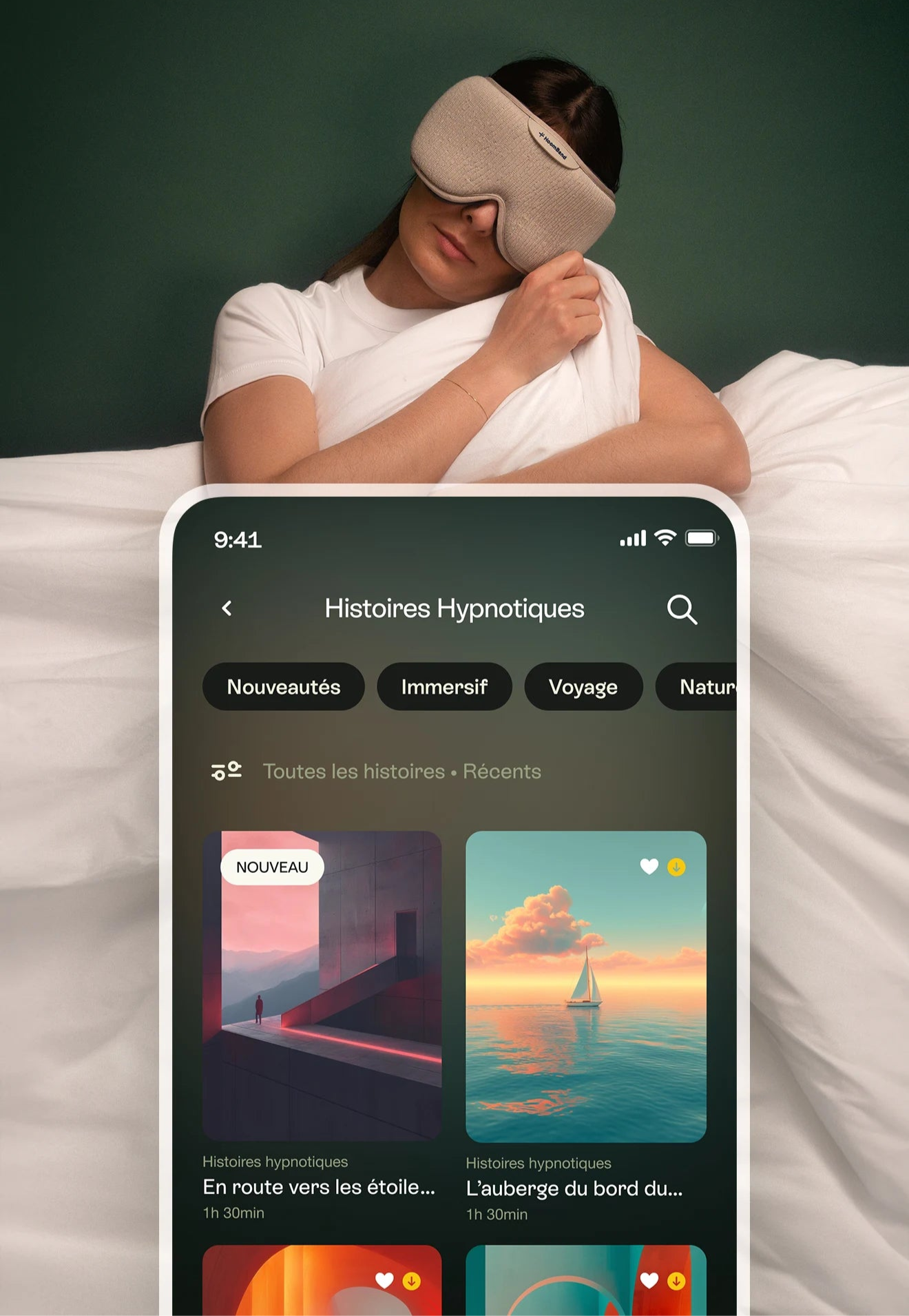What is sleep paralysis?
Sleep paralysis is a sleep disorder that we know and recognize, but which still remains quite mysterious, even for scientists. While it can be a symptom of narcolepsy, sleep paralysis can also be isolated and recurrent, affecting anyone, even people who do not suffer from any other sleep disorder. This is perhaps where the mystery of this parasomnia lies: anyone can experience it! But then, what do we really know about sleep paralysis ? Why can this sleep disorder turn into a nightmare? Here are some answers!
How can sleep paralysis be defined?
It is a sleep disorder characterized by an inability to move . One is aware of one's condition, but the inhibition of the muscles is such that it is impossible to make movements. Sleep paralysis is a symptom of narcolepsy which is classified as a parasomnia , that is, a sleep disorder characterized by a set of abnormal and unwanted behavioral or psychological events that occur during sleep, or at the border between sleep and wakefulness. Recurrent sleep paralysis is a parasomnia of REM sleep, it can be hypnagogic (at the time of falling asleep) or hypnopompic (at the time of waking): it is an anomaly of the transition between wakefulness and sleep, or between sleep and wakefulness .
This waking paralysis (hypnopompic) can be accompanied by auditory and/or visual hallucinations, making it even more distressing, even traumatic. The association between hallucinations and muscular hypotonia (loss of tone) in a conscious state sometimes results in putting the individual who is the victim in such a state of fear and helplessness that sleep paralysis gives rise to mystical interpretations, well beyond science! Besides demons and other evil spirits, this sometimes terrifying phenomenon was described by the writer Guy de Maupassant in his famous fantasy tale " The Horla ," who probably suffered from episodes of sleep paralysis: "I feel that I am lying down and that I am asleep... I feel it and I see it... and I also feel that someone is approaching me, looking at me, feeling me, climbing onto my bed, kneeling on my chest, taking my neck in their hands and squeezing... squeezing... with all their strength to strangle me. I struggle, bound by this atrocious helplessness, which paralyzes us in dreams; I want to scream, I cannot." This is a perfect description of this traumatic mystery!

Some figures concerning sleep paralysis
Despite the limited data available to quantify the prevalence of sleep paralysis, Dr. Brian A. Sharpless and his colleagues at the Universities of Pennsylvania and Penn State in the United States cross-referenced data from more than 30 studies involving 35,000 individuals to establish the frequency of this disorder. This 2011 analysis1 reveals that nearly 8% of the population has experienced or will experience an episode of sleep paralysis "at least once in their life." This figure rises to nearly 35% for people suffering from diagnosed psychiatric disorders (post-traumatic stress, panic attacks, etc.).
Another epidemic study from 19992 , carried out on a sample of 8085 European subjects aged 15 to 99 years, highlights the following data concerning the prevalence of sleep paralysis :
- 6.2% of participants experienced at least one episode of sleep paralysis during their lifetime
- 1.4% of participants experienced moderate sleep paralysis (at least one episode per month)
- 0.8% of participants experienced severe sleep paralysis (at least one episode per week)
What causes sleep paralysis?
To date, scientifically speaking, it is still difficult to establish the exact causes of sleep paralysis. However, cross-referencing various studies tends to identify common factors among victims of this sleep disorder. One study3 clearly demonstrates that poor sleep quality is a cause regularly associated with sleep paralysis. In addition, other factors4 have been highlighted to explain the latter:
- fatigue, poor sleep quality, insomnia
- anxiety
- post-traumatic stress, depression
- sudden change in lifestyle (new job, bereavement, change of living environment, etc.)
- suffer from narcolepsy
We therefore note that people suffering from sleep disorders (insomnia, narcolepsy) would not be more exposed than others, even if individuals with diagnosed behavioral disorders seem more inclined to be victims of episodes of sleep paralysis.
How does sleep paralysis manifest itself?
When we are in the REM sleep phase, our body is in a state of paralysis called " muscle atonia ." This muscle atonia is caused by the brain to prevent the body from injuring itself during sleep. It is programmed to stop itself when we wake up. However, the sleep paralysis episode comes from waking up during a REM sleep phase, a time when brain activity is intense, but without communication between the muscles and the brain. We are therefore in a waking state but unable to act on our muscles because the brain is still in "muscle atonia" mode.
While sleep paralysis is not dangerous in itself for health or the body, it can nevertheless be very traumatic in its most extreme form, when it is accompanied by particularly distressing hallucinations. The experience of paralysis of the body then transforms into a waking nightmare . The psychological after-effects of this trauma can be more or less significant depending on the individual. Some testimonies of people who have been victims of episodes of sleep paralysis5 are also very eloquent and do not leave one indifferent, even giving ideas for screenplays for the cinema! A gripping documentary, " The Nightmare6 ", was directed by Rodney Ascher, himself a victim of episodes of sleep paralysis. Far from playing on the terrifying aspect of this parasomnia, he delivers a vision that is perhaps even more realistic and objective through different testimonies.
Sleep paralysis can actually be described as " wake paralysis " when it is hypnopompic.
Here are the main symptoms of sleep paralysis , identified by different studies7 :
- inability to move
- impression of awakening
- feeling of suffocation, impression of feeling a weight on the chest
- auditory hallucinations, visual hallucinations

How can sleep paralysis be diagnosed?
Diagnosis of sleep paralysis is based on clinical signs collected by individuals during the various episodes they experience. A consultation with a doctor is then necessary to carry out an evaluation of the medical history as well as to identify the various disorders that may be associated with sleep paralysis: behavioral disorders, emotional shock, sleep disorders, or even anxiety. Sleep disorders such as insomnia or narcolepsy should be taken into account. Monitoring sleep phases using polysomnography makes it possible to detect electrical activity in the muscles, and thus to characterize sleep paralysis by recording a low level of this electrical activity.
Thus, according to certain studies8 , the quality of sleep and the disorders associated with it (insomnia, narcolepsy, fatigue, nightmares), as well as some behavioral disorders, could allow sleep paralysis to be diagnosed.
How can sleep paralysis be treated?
There is no specific treatment for sleep paralysis. However, we can try to treat some of the supposed causes of this phenomenon9 , namely:
- improve sleep quality by going to bed at a regular time and avoiding sleep deprivation as much as possible
- combat sources of stress and anxiety (through relaxation techniques, for example)
- prescription of antidepressants to limit episodes of sleep paralysis, especially in cases associated with narcolepsy
Sleep paralysis is not dangerous to the physical integrity of those who suffer from it . However, it remains stressful and distressing for the majority of people who suffer from it due to the association between the state of consciousness in which one finds oneself and the paralysis it causes, not to mention the possible hallucinations. While it can affect anyone when we talk about isolated recurrent paralysis , its form associated with narcolepsy is more severe.
To complete the discussion on sleep paralysis, here is a link to a “Ted” video (“ The Terrors of Sleep Paralysis ” by Ami Angelowicz) which illustrates this surprising and mysterious phenomenon very well!
Sources:
[1] Lifetime prevalence rates of sleep paralysis: A systematic review , Brian A. Sharpless, Jacques P. Barber, “ Sleep Medicine Reviews ”, October 2011[2] Prevalence and pathologic associations of sleep paralysis in the general population , MM Ohayon, J. Zulley et al, “ Neurology ”, April 1999[3] Relationships between sleep paralysis and sleep quality: current insights , Dan Denis, “ Nature and Science of Sleep ”, November 2018[4] What You Should Know About Sleep Paralysis , “SleepFundation” site, 2020[5] The frightening experience of sleep paralysis, the waking nightmare , “rtbf.be” site, 2018[6] The Nightmare, official trailer , excerpt from the documentary, “Youtube” site, 2015[7] Isolated sleep paralysis , NS Sawant, SR Parkar et al, “ Indian Journal of Psychiatry ”, October-December 2005[8] Relationships between sleep paralysis and sleep quality: current insights , Dan Denis, “ Nature and Science of Sleep ”, November 2018[9] Sleep disorders in children and adults , “College of Neurology Teachers” website, 2020


